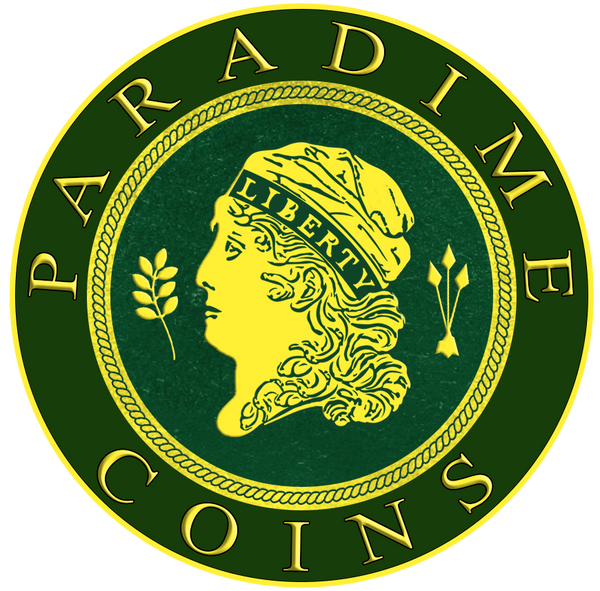Collection: Capped Bust Quarter (1815 - 1838)
No products found
View All Inventory
The Capped Bust Quarter, introduced in 1815, represents a significant chapter in U.S. coinage history. Designed by John Reich, this series features two distinct types: Large Size (1815–1828) and Small Size (1831–1838). These coins are beloved by collectors for their historical importance, intricate designs, and varying rarity across the series.
Key ... Read More
The Capped Bust Quarter, introduced in 1815, represents a significant chapter in U.S. coinage history. Designed by John Reich, this series features two distinct types: Large Size (1815–1828) and Small Size (1831–1838). These coins are beloved by collectors for their historical importance, intricate designs, and varying rarity across the series.
Key Specifications
- Designer: John Reich (Large Size), William Kneass (Small Size)
- Issue Dates: 1815–1838
- Composition: 89.24% silver, 10.76% copper
-
Diameter:
- Large Size: 27 mm
- Small Size: 24.3 mm
- Weight: 6.74 grams (104.01 grains)
- Edge: Reeded
Design Evolution
Type 1: Large Size (1815–1828)
The Large Size Capped Bust Quarter features Miss Liberty facing left, wearing a cloth cap with the word LIBERTY inscribed. The reverse shows an eagle perched on a branch, clutching arrows, with a shield on its breast. Above the eagle is the motto E PLURIBUS UNUM.
-
Notable Dates:
- 1815: First year of issue after an eight-year hiatus.
- 1823/2: A major rarity with only a handful of known examples, often heavily worn.
- 1827/3: An exceptionally rare overdate, primarily seen in Proof or impaired Proof condition.
-
Rarity:
- Most dates are collectible in grades from Very Good to Very Fine, but AU and Uncirculated examples are scarce.
Type 2: Small Size (1831–1838)
The Small Size Capped Bust Quarter, redesigned by William Kneass, features a reduced diameter and refined details. The reverse omits the motto E PLURIBUS UNUM and displays a more compact design.
-
Notable Variations:
- 1831: Features both Small Letters and Large Letters varieties.
- 1837–1838: Scarce in higher grades due to lower production figures.
-
Rarity:
- Common in Very Good to Extremely Fine, but Uncirculated examples are rare, especially in higher MS grades.
Historical Highlights
Early Suspension and Resumption
After the Draped Bust Quarter ceased production in 1807, the U.S. Mint did not strike quarters until 1815. The new Capped Bust Quarter adhered to a uniform design standard across silver denominations, aligning with the Mint’s practices of the time.
Rarities in the Series
- 1823/2 Overdate: Known for its extreme rarity, most surviving examples are in lower grades, making it a prized coin among collectors.
- 1827/3 Overdate: Though listed as a business strike, all known examples are Proof or impaired Proof, further enhancing its desirability.
Design Refinement in 1831
The 1831 redesign reduced the coin’s diameter, improved its proportions, and gave it a cameo-like appearance. This Small Size design persisted until the series concluded in 1838.
Collectibility and Market Insights
Type Collectors
- Large Size (1815–1828): The 1815 and other common dates are accessible in grades up to Extremely Fine, while rarer issues like the 1823/2 and 1827/3 are cornerstone coins.
- Small Size (1831–1838): Common dates are ideal for type collectors, with affordable examples available in circulated grades.
Advanced Collectors
- Overdates, such as the 1823/2 and 1827/3, offer significant challenges and rewards for specialists.
- Certain varieties, including the 1831 Small Letters and Large Letters issues, appeal to numismatists focused on die variations.
Why Collect Capped Bust Quarters?
The Capped Bust Quarter series embodies the artistry and history of early U.S. coinage. With its array of overdates, design modifications, and rarities, it offers collectors a rich and rewarding pursuit.
Shop Capped Bust Quarters at ParadimeCoins.com
Explore the fascinating world of Capped Bust Quarters at ParadimeCoins.com. From rare overdates to beautifully preserved examples, we offer a curated selection of coins to enhance any collection. Start your journey into early American numismatics today!
... Read Less






